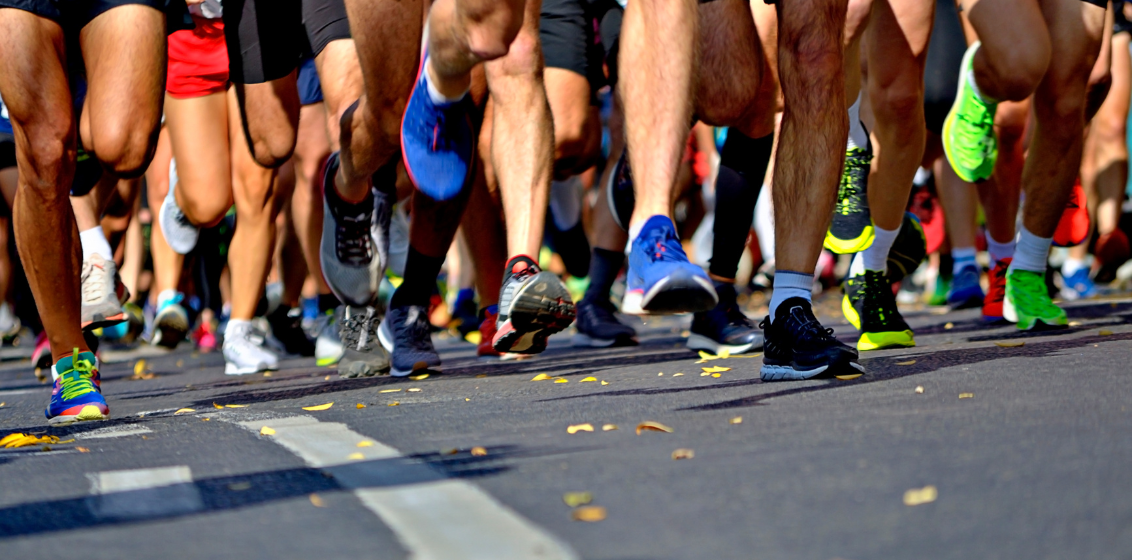Why Running Sucks in Hot Weather

Have you just done the Sydney Marathon or Half Marathon? Did you struggle with the crazy hot conditions? If you did, you weren’t alone, with 460 runners starting but not finishing the marathon. But why does heat mess up an otherwise perfect preparation and bring undone those months of training. Read on as we outline what goes on in the heat and talk about ways to improve this next time
What happens when we run in hot conditions?
When we run, our muscles burn fuel to produce energy to produce force. These chemical reactions are very inefficient, with only 20% of the energy produced going to the muscle to move us forward. The remaining 80% is converted to heat. This heat must be moved away from the working muscle and our blood absorbs this heat (we’re warm-blooded remember?)
To dissipate this heat, blood flow increases to the largest organ in the body, the skin. The body also reduces blood flow to other areas, such as digestive organs, at the same time.
The skin can help transfer heat out of the body in two ways: convection, by losing heat to moving air across the skin, or by evaporating sweat accumulated on the skins surface.
In hot weather (over 25 degrees), we can actually gain heat from convection (worst if air temp is above 30 degrees) or from radiation from hot surfaces around us. Worse still, in humid conditions, the air is already saturated with water vapour, so our sweat cannot evaporate (boil and turn into steam is a very figurative way to describe this) and drips from our body. Every drop that drips is wasted as we are losing blood volume and electrolytes with no loss of heat. So, the worst-case scenario is running on a hot day with high humidity.
In prolonged exercise, sweat losses can equal from about 1 litre to 2.5 litres per hour. This reduces our blood volume and so to maintain blood supply to working muscles, organs and our brain, the heart must beat faster. So, at the same running pace, expect your heart rate to increase in the heat compared to what you normally see when it’s not hot.
To replace fluid lost to sweat, we need to drink. However, the body has reduced blood flow to the stomach and sent it to the skin, so it is not emptying as well as it does at rest. Filling it with litres of sweet, salty sports drink can lead to significant stomach issues which can make interesting viewing for spectators.
In temperatures above 25 degrees, your core temperature will increase above normal, as blood flow will be prioritised to your muscles more than your skin so heat will continue to accumulate. Most of us don’t like this sensation and will slow down to keep our core temperature at a level the body can cope with. Your brain will sense when that core temperature reaches about 40 degrees and by that time most of us will voluntarily stop exercise (usually due to symptoms like fatigue, cramps, stomach upset and headache). Sometimes the core temperature increases so quickly, or our personality traits allow us to continue past what’s sensible and we develop heat illness or collapse.
So to sum up, running in the heat compared to in cool conditions causes
- Increased sweat rates and dehydration
- Increased core temperature
- Increased depletion of muscle energy reserves
- Increased perceived exertion and perception of heat
- Decrease in delivery of blood, oxygen and nutrients to muscle, decreased muscle function and increased accumulation of waste products in muscle
- Decreased exercise performance: you will run slower at the same heart rate, or run the same pace with a higher heart rate and increased risk of symptoms
- Taken further, heat related symptoms, heat illness and heatstroke can really ruin your day
So what can we do about racing on a hot day
There are steps you can take to help improve your ability to deal with a hot day on the run.
Heat acclimatisation training: your body can be trained to deal with hot conditions, and it appears it only takes one to two weeks for maximum benefits. This can be done in two ways
- Training in hot conditions. This is ideally done for 60 minutes a day, in temperatures and humidity matching race day, at an intensity that elevates core temperature to 38.5 degrees and brings on heavy sweat rates. Alternating hot day/normal training days can work well, and even walking in heat can get the job done.
- Passive heating after exercise: sitting in 40-degree baths or a sauna for 30 minutes after exercise can accelerate heat acclimatisation. These strategies DON’T work without the exercise session beforehand unfortunately, but they allow you to perform shorter exercise sessions in the hot conditions.
Hydration strategy:
- Planning your fluid intake and practising it during acclimatisation runs can train your stomach and allow you to trial what sort of drink and what amount will work for you on race day.
- Drink to thirst during training and aim to replace 1.5 times your sweat losses after training.
Adjust your expectations:
- The plain facts are that if Mother Nature puts on a 35 degree day you will not be able to run the same pace you do at 17 degrees.
- Shelve your expectations of a PR or big negative split, set a realistic target (ie survive, not blow out by an hour, set a hot day PR) and “enjoy” getting through the day.
Dress for success:
- What you wear can help, or hinder, your body’s attempt to blow off heat.
- Avoid cotton, wear light, quick drying synthetics
- Help your sweat rate by exposing as much skin as is socially acceptable. Short, loose-fitting shorts and racerback singlets are much better than skin tight compression tights or long socks
- Light colours absorb less heat than black clothing.


